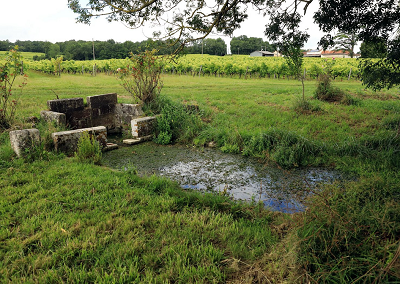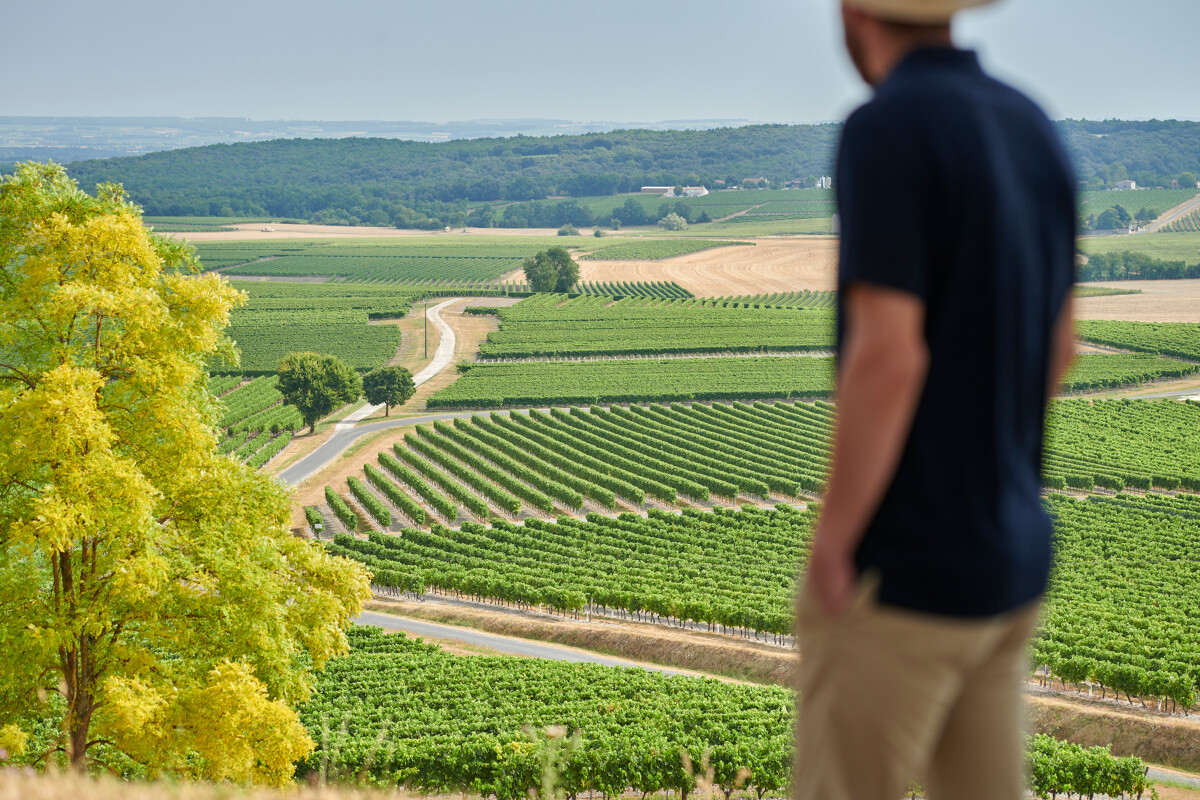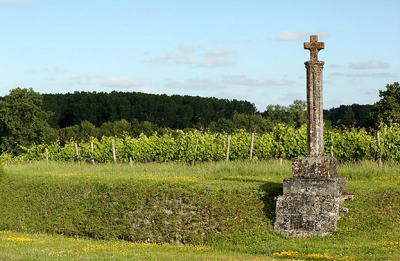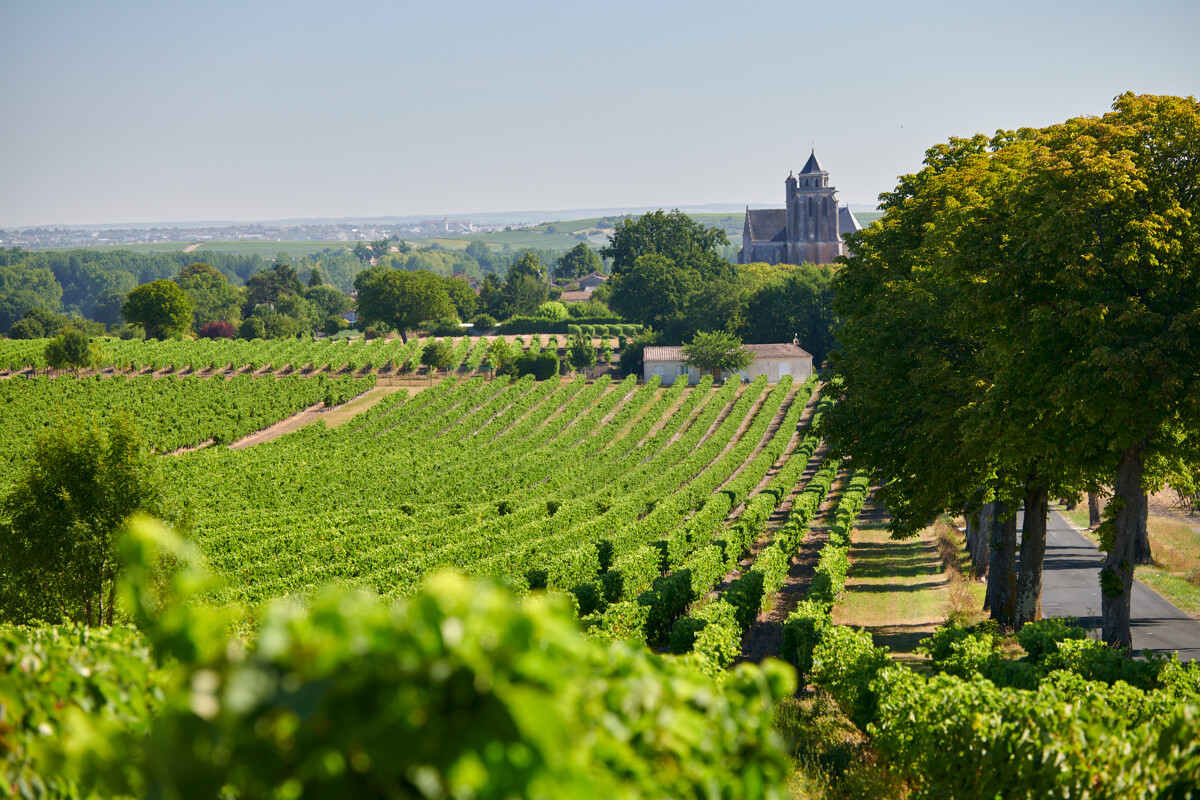2023.07.23
Exploring the Vernacular Heritage in Cognac II | Origins
Visit the vernacular heritage in Cognac landscapes
This article will continue to revisit the vernacular heritage in Cognac landscapes through the work “the landscapes of Cognac”. Mills, Wash houses, pigeon houses… these modest buildings are the witness of the life of our ancestors, traces about the daily life are the footprints of time.
Precious in the rural economy, mills became widespread from the 12th century. Equipped with two large circular millstones between which the grain was crushed, they made man’s work easier. In the windmill, the driving force was transformed into rotary motion by the wings. The mill had a mobile frame that turned with the roof by means of a long pole that allowed the miller to orient the wings to the wind. The whole thing slid along a well-greased wooden track. The wings, often four in number, were sheets fixed on a wooden structure. The upper parts of the mills have disappeared, leaving only stone towers, often ruined.
The whitewashed interior was equipped with clay nests in which the pigeons were housed and brooded. With several broods per year, the breeding of pigeons constituted a source of income, their droppings, called “colombine”, being a sought-after fertilizer. After the Revolution, the construction of these buildings was democratized and developed on properties with more modest dimensions. Various fertilizers having replaced the dovecote, the breeding of pigeons gradually stopped.

These modest buildings are the witness of the life of our ancestors. Walking in the Cognac region is also walking through history.

THE MILLS
Precious in the rural economy, mills became widespread from the 12th century. Equipped with two large circular millstones between which the grain was crushed, they made man’s work easier. In the windmill, the driving force was transformed into rotary motion by the wings. The mill had a mobile frame that turned with the roof by means of a long pole that allowed the miller to orient the wings to the wind. The whole thing slid along a well-greased wooden track. The wings, often four in number, were sheets fixed on a wooden structure. The upper parts of the mills have disappeared, leaving only stone towers, often ruined.
THE DOVECOTES
The whitewashed interior was equipped with clay nests in which the pigeons were housed and brooded. With several broods per year, the breeding of pigeons constituted a source of income, their droppings, called “colombine”, being a sought-after fertilizer. After the Revolution, the construction of these buildings was democratized and developed on properties with more modest dimensions. Various fertilizers having replaced the dovecote, the breeding of pigeons gradually stopped.
THE WASH HOUSES
Established on rivers, near springs and villages to be easily accessible to the washerwomen, the washhouses appeared in the 18th century and developed into the 19th century. Their architecture is generally sober, with sometimes a roof, an inclined plane on which one installed, plunging in water, a board to rub the linen. Basins could be built, often rectangular with a paved bottom and barriers to drain the laundry. After drying them, they were stored in the attic while waiting for the “bughée”, a big laundry organized twice a year, before Palm Sunday and around All Saints’ Day, by the women of the village. Up to 30 to 40 pairs of sheets and cloths were washed in sandstone vats, called “ponnes”, containing between 100 and 400 liters of water. Bags of ash were used as soap and iris roots were used to perfume the whole. A fire was lit under the “ponnes”and the linen was sprinkled with boiling water. The operation lasted between four and five days. The linen was then rinsed abundantly in the washhouse, then wrung out and laid on the grass to dry.


These modest buildings are the witness of the life of our ancestors. Walking in the Cognac region is also walking through history.

Copyright BNIC / Aurelien TERRADE
SEE ALSO
2018.06.20
WATERS AND COGNAC
The Charente river makes our region heart keep on beating to the ocean.







